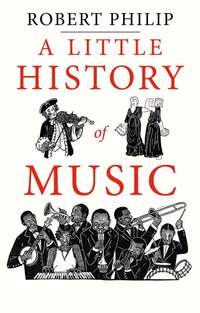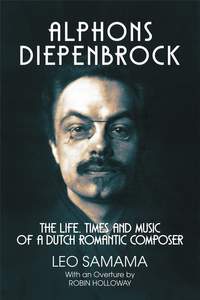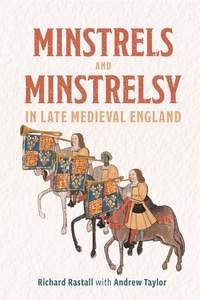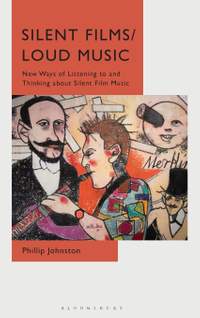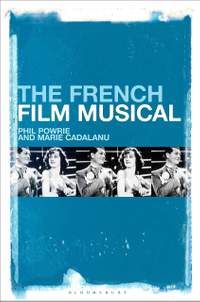New Publications,
New Music Book Publications - 10th April 2023
Welcome to our latest selection of new music publications, including reflections on music and performance from tenor Ian Bostridge, a history of music across different cultures through the millennia, an exploration of how A=440 hertz became the international standard for concert tuning, the life and times of Dutch composer Alphons Diepenbrock, a study of minstrels in late medieval England, a practical approach to teaching choral sight reading, an examination of how Spanish folk music was collected and transmitted during the early years of the Franco regime, an analysis of the phenomenon of providing contemporary scores for silent films, and a guide to French film musicals since the 1930s.
Song and Self: A Singer's Reflections on Music and Performance
Ian Bostridge; Faber & Faber; Hardback
Like so many performers, Ian Bostridge spent much of 2020 and 2021 unable to take part in live music. This enforced silence allowed him to explore the backstories of some of the many works he has performed, by composers such as Monteverdi, Schumann, Ravel, and Britten. He explores questions such as what it means for audiences when a singer inhabits these roles, and the extent to which a performer's own identity subtracts from or adds to the identities inherent in the works.
Available Format: Book
Human beings have always made music; it is common to all cultures across the world. But how has it changed over the millennia? This book explores the extraordinary history of music in all its forms, from our earliest ancestors to today’s mass-produced songs. Looking to Europe, South America, Asia, and Africa, it reveals how musicians have been brought together by trade and migration, and examines the vast impact of colonialism.
Available Format: Book
Tuning the World: The Rise of 440 Hertz in Music, Science, and Politics, 1859–1955
Fanny Gribenski; University of Chicago Press; Hardback
Now commonly accepted as the point of reference for musicians in the Western world, A=440 hertz only became standard pitch during an international conference held in 1939. The adoption of this norm was the result of decades of negotiations, involving a group of performers, composers, diplomats, physicists, and engineers. This book draws on a rich variety of sources to tell the story of how A=440 became the global norm.
Available Format: Book
Alphons Diepenbrock: The Life, Times and Music of a Dutch Romantic Composer
Leo Samama; Toccata Press; Hardback
The music of Dutch composer Alphons Diepenbrock (1862-1921) is one of the glories of European late-Romantic culture, although he is hardly known outside his native Netherlands. Self-taught as a composer, Diepenbrock was a classics tutor by profession, a Catholic with a fondness for religious mysticism and one of the leading Dutch intellectuals of his day, with Mahler, Schoenberg and Richard Strauss among his circle of friends.
Available Format: Book
Minstrels and Minstrelsy in Late Medieval England
Richard Rastall & Andrew Taylor; Boydell & Brewer; Hardback
Minstrels were a common sight and sound in the late Middle Ages. Aristocrats, knights and ladies heard them on great occasions (such as Edward I's wedding feast for his daughter Elizabeth in 1296) and in quieter moments in their chambers; town-dwellers heard and saw them in civic processions; and even in the countryside people heard them at weddings and other celebrations. This study pieces together the fragmentary evidence surrounding their lives to highlight how these seemingly peripheral figures were involved with all aspects of late medieval communities.
Available Format: Book
Choral Sight Reading: A Kodály Perspective for Middle School to College-Level Choirs, Volume 2
Micheál Houlahan & Philip Tacka; Oxford University Press; Paperback
This volume provides a practical approach to teaching choral singing. Topics include framing a choral curriculum based on the Kodály concept; launching the academic year; building part-work skills; sight-reading; teaching strategies; choral rehearsal plans; and samples of how to teach specific repertoire from medieval to contemporary choral composers.
Available Format: Book
Coros y Danzas: Folk Music and Spanish Nationalism in the Early Franco Regime
Daniel David Jordan; Oxford University Press; Hardback
The Sección Femenina of the fascist Falange party during the early Franco years officially represented the regime's views on female gender roles. Sending their instructoras de música to remote villages to transcribe and compose songs and dances, they were portrayed as the keepers of Spanish folk music. This book proposes that the Sección's definition of Spanish cultural purity was never monolithic, but a malleable concept that depended on the social contexts in which its members were operating.
Available Format: Book
Silent Films/Loud Music: New Ways of Listening to and Thinking about Silent Film Music
Phillip Johnston; Bloomsbury; Paperback
As the first volume completely devoted to the study of contemporary scores for silent film, this book tells the story of the historical and creative evolution of the art form. Featuring an extended analysis of some of the most creative works of contemporary silent film scoring, it presents a discussion of music for silent films that contradicts long-held assumptions about what silent film music is and must be.
Available Format: Book
Like many national cinemas, French cinema has a rich tradition of film musicals beginning with the advent of sound to the present. Remarkable for its breadth and variety, the French film musical flirts with the Hollywood musical in the 1930s and again in the 1950s, but has very distinctive forms rooted in the traditions of French chanson. This book shows how the genre absorbs two very different traditions with the advent of sound: European operetta and French chanson inflected by American jazz (1930-1950).
Available Format: Book



